Introduction
This study examines the characteristics, use and effects of a particular aircraft bomb. It is part of a series of technical studies on explosive weapons undertaken by the GICHD, providing evidence and contributing to the analysis. A version of this study can be found in the final report on Characterisation of Explosive Weapons (GICHD, 2016) as Annex F.

Photo 1. Mk 82 type aircraft bombs fuzed and fitted to an A-6 Intruder (photo credit: © BrokenSphere / Wikimedia Commons. Creative Commons Attribution-Share Alike 3.0 Unported license. ).
Air-delivered munitions may provide the ability to destroy ground and naval targets without risking a large number of military personnel, even when operating deep within enemy territory. The Mk 82 aircraft bomb and its guided variants have been used extensively throughout the world and are one of the most common families of air-delivered munitions ever produced.
The Mk 82 and its variants are 500-pound (227 kg) class, low-drag, general-purpose aircraft bombs containing 89 kg of high explosive. Originally dropped as an unguided bomb (sometimes referred to as an ‘iron’ or ‘dumb’ bomb), early versions of the Mk 82 were only able to hit their target 5.5% of the time, requiring large numbers of bombs to be dropped (Blackwelder, 1993). Guided versions, such as the GBU-12 and the GBU-49, now have a CEP of less than 4 m, indicating very high precision. During Operation Desert Storm in 1991, the laser-guided GBU-12 was reported as striking its targets 88% of the time, with most targets being single vehicles (Blackwelder, 1993). The introduction of PGMs, means that targets can be destroyed with a relatively small and precise strike, reducing the risk of aircrew losses.
The Mk 82 aircraft bomb has been used by the US military and various other nations since the 1950s, and saw extensive deployment in South East Asia during the Vietnam war. The Mk 82 remains relevant in current and recent conflicts. During the 1991 Gulf War, more than 4,500 Mk 82 bombs configured as laser-guided GBU-12 model PGMs were used by the US and its allies (Friedman, 1997). In 2016, various configurations of the Mk 82 have been used in a number of countries and territories, including Afghanistan, Gaza, Iraq, Libya, Syria, and Yemen (ARES, n.d.).
MK 82 LETHAL EFFECTS
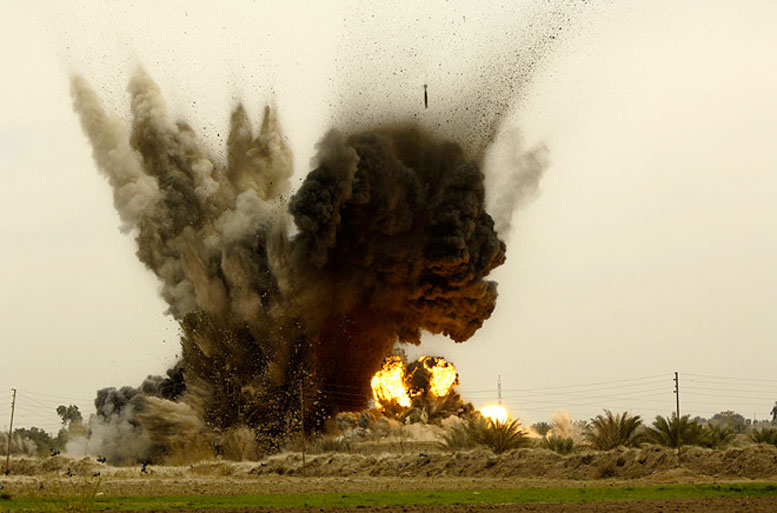
Photo 2. A GBU-38 detonation in Iraq (photo credit: US Army).
In its simplest configuration, the standard Mk 82 bomb contains 87-89 kg of high-explosives, in a forged steel body weighing 140-142 kg (Glass et al., 1997; Ordtech, 2016). It is this steel body that produces the primary fragmentation for the bomb. The bomb relies on the natural fragmenting of the body, and the dispersal pattern and size of the fragments is largely random.
One of the manufacturers of the Mk 82 also produces a version with a pre-fragmented body. This means that the bomb’s body has been scored at regular intervals along its length and width so that it will readily break apart into fragments of uniform size. The effect of pre-fragmentation on the overall effectiveness of the Mk 82 is significant. A standard Mk 82 bomb body produces a lethal area of approximately 80 m (across) by 30 m (along), giving a lethal area of approximately 2,400 m2. The pre-fragmented version, known as the PFB-82, produces a similarly-shaped, but much larger lethal area of 240 m (across) by 80 m (along) high, giving a lethal area of 19,200 m2. As Figure 1 shows, an Mk 82 with standard forged-steel body will produce fewer than 3,000 natural fragments, but the PFB-82 model will produce almost 17,000 fragments (Ordtech, 2016).

Figure 1. Fragmentation produced by different models of the Mk 82 bomb (source: Ordtech Industries).
These figures indicate that for the same explosive weight, pre-fragmentation can create a lethal area as much as eight times greater than one caused by natural fragmentation. It does this by producing nearly six times as many fragments as a comparatively smaller size. This represents a more efficient way to deliver lethal effects against human targets. It also demonstrates that in an open area, in which blast effects decay rapidly, fragmentation is the primary means of human incapacitation.
As shown in Table 1, there is a 10% risk of being incapacitated at a 250 m distance from the point of detonation, and a 0.1% (1 in 1,000) risk of being incapacitated at 425 m. The manufacturer states that the Mk 82 is designed to produce fragments that vary in weight from 0.2 g to 20 g, which will be travelling at an initial velocity of between 760 m/s to 2,440 m/s (Ordtech, 2016). In practice, the Mk 82 produces some fragments that are much larger than the stated 20 g.
Table 1 – Risk Estimate Distance (m) for Different Models of the Mk 82 bomb

Source: Department of the Navy, 1998.
THE MK 82 AIRCRAFT BOMB
The Mk 82 is one of a series of low-drag, general-purpose aerial bombs, which are collectively known as the Mk 80 series of bombs. There are four bombs in this series, ranging from the 113 kg Mk 81 to the 907 kg Mk 84. The Mk 80 series of bombs was developed in the late 1940s, and remains in service today (USN, 1999).

Figure 2. The Mk 80 series of bombs (source: Defense Industry Daily).
Following the Vietnam War, the Mk 81 bomb was rarely used (476 VFG, USAF. This decision led to the Mk 82 (weighing 227 kg) becoming the smallest aircraft bomb in service with US forces until recently. Although the Mk 82 has a nominal weight of 227 kg, it comes in a number of configurations, each with slightly different explosive fills and guidance units. This means that the precise weight of the bomb varies according to the way it has been set up to operate. This weight can range from approximately 230 to 260 kg.
Mk 82 aircraft bombs normally contain one of two types of high-explosive: Composition H6, which is a combination of RDX, TNT, aluminium and calcium chloride; or Tritonal, which is composed of a combination of 80% TNT and 20% aluminium (Fadden et al., 2009; USN, 1985). There is also a US Navy version of the Mk 82, which contains 89 kg of PBXN-109. This is a thermally insensitive explosive that is specifically designed for use aboard aircraft carriers. The US Navy uses a thermally insensitive explosive, as well as a special exterior coating to the bomb (nicknamed ‘gator skin’) that insulates the bomb body to reduce the chances it could explode in a shipboard environment. When an Mk 82 is filled with PBXN-109, it is given the designation Bomb Live Unit-111 A/B (BLU-111 A/B) (USN, 2003).
The designation ‘general-purpose’ in the description of the bomb indicates that the Mk 82 is not designed for a specific role, such as concrete piercing or airport runway cratering; instead it is a more flexible weapon, able to be deployed against a range of targets, delivering broadly-applicable blast and fragmentation effects. The Mk 82 can be used as a simple unguided bomb, or it may be configured as the explosive core for a range of air-delivered munitions.
VARIANTS OF THE MK 82 AIRCRAFT BOMB
The basic configuration of the Mk 82 can be modified with a variety of different tail units, fuzes, and guidance units. The different configurations have been designed in a modular style, with the Mk 82 body forming the core of each.
MK 82 BOMB (UNGUIDED)
Figure 3 shows the basic Mk 82 bomb body, without a tail or guidance unit attached. The bomb can be fitted with a nose fuze, a tail fuze, or both simultaneously.
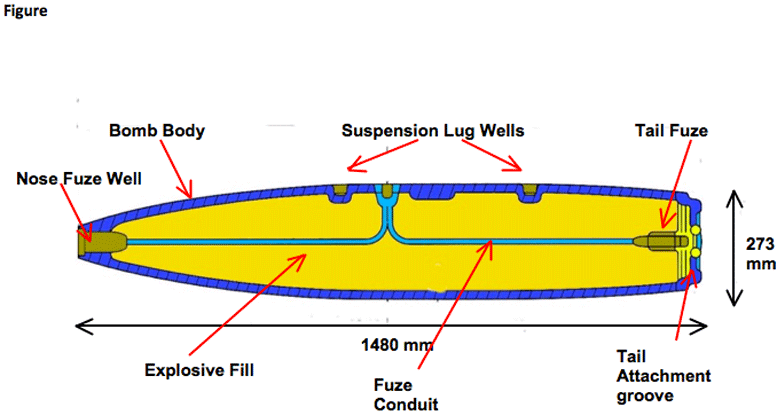
Figure 3. Diagram of the Mk 82 bomb body without a tail or guidance unit (source: CORD).
During the Vietnam War, the Mk 82 could be delivered as a simple iron bomb with a low-drag tail unit, known as the MAU-93/B. This was superseded by the BSU-33 tail unit. When the Mk 82 is fitted with the MAU-93/B or the BSU-33, it functions as a typical unguided aircraft bomb. The Mk 82 can also be fitted with tail units that are designed to slow its descent, for example, the Mk 15 Snakeye retarder fin (USN, 2001). The principle behind the retarder fin is to allow the delivery aircraft to drop the bombs from low altitude and relatively low speed, without the plane being affected by the blast or fragmentation of the detonation. The Mk 15 Snakeye was commonly used in the Vietnam war, and is still frequently found in use throughout Vietnam, Laos, and Cambodia. The Mk 15 Snakeye has been superseded by the visually-similar BSU-86 type tail units (Everett & Oster, 1994).

Figure 4. The Mk 82 aircraft bomb fitted with different tail units (source: Zone-Five forum http://zone-five.net/showthread.php?t=25432).
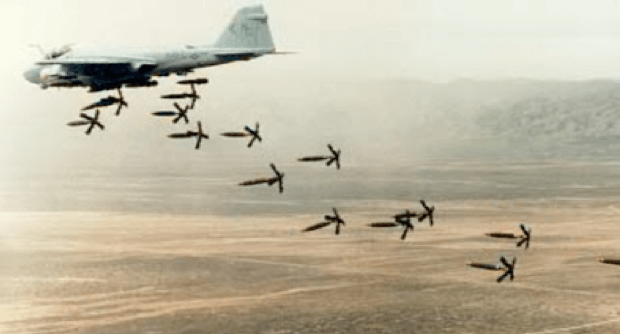
Photo 3. Mk 82 bombs, fitted with the Mk 15 Snakeye retarder fins (source: U.S. Air Force).
Another way to slow the descent of Mk 82 bombs is to use an Air Inflatable Retarder (AIR) tail unit, as shown in photo 4. The AIR deploys a ballute from the tail unit, providing high speed, low altitude delivery capability. Either a high-drag or low-drag configuration may be selected, depending on the mission requirement. The AIR was developed to allow for higher airspeed delivery of Mk 80 series munitions (Kareffa, 1972; USN, 2001). With any unguided air-delivered bomb, correct employment height, distance, speed, and bearing from the target are critical for ensuring accuracy and precision. As such, pilot skill is a factor in the precise employment of these weapons. Accuracy and precision may be increased by the use of kits which convert the Mk 82 to a precision guided munition (PGM), and by the use of various advanced fire-control systems.

Photo 4. Mk 82 type bombs fitted with Air Inflatable Retarder (AIR) tail units (source: Kris Brackx/Belgian Wings).
MK 82 MODEL 7
The Mk 82 Model 7 has not yet been introduced into service, but it will have identical dimensions and weight to the existing Mk 82 series bombs. The body of the Model 7 will be made of cast ductile iron, as opposed to the standard steel body. The cast ductile iron body is designed to give a wider spread of fragmentation than a steel body. It will be fitted with a proximity fuze, so that it detonates above the target, rather than on impact. This effect is commonly called the airburst effect, and like the ductile iron casing, is designed to maximise the spread of fragmentation. The Mk 82 Model 7 is due to enter service in 2018 (Drew, 2014).
JOINT DIRECT ATTACK MUNITION (JDAM) – GUIDED BOMB UNIT (GBU-38)
The addition of a guidance and control unit converts the Mk 82 into a precision guided munition (PGM), commonly referred to as a ‘smart bomb’. The most common PGMs, which are based on the Mk 82, include those in the Joint Direct Attack Munition (JDAM) and Paveway families. It is important to note that there have been multiple iterations of these munitions, and that they have been subject to incremental improvement programmes over time.
The JDAM series of weapons offers INS/GPS guidance (see below) and constitutes the mainstay of U.S. air-delivered munitions at present. In Figure 5, below, the Mk 82 has been modified by the addition of a guidance kit into a Guided Bomb Unit-38 (GBU-38), which is part of the inventory of JDAMs used by the U.S. and other air forces (IISS, 2010).

Figure 5. Diagram of the GBU-38 JDAM (source: Air Power Australia).
The JDAM family of munitions uses ‘bolt-on’ guidance packages, equipped with both an Inertial Navigation System (INS), and GPS technology, to provide a basic bomb unit with significantly enhanced precision and accuracy. The guidance and control unit (GCU) is contained in the tail. The GPS guidance unit must be pre-programmed with the target information before dropping the bomb, but the pre-programming of co-ordinates can now be done remotely via the aircraft’s datalink. If it is able to use both GPS and INS guidance systems, the GBU-38 has a CEP of 5 m or less. If the GPS is jammed after launch, the GBU-38 will have a CEP of 30 m. The JDAM guidance package cost approximately USD 27,000 in 2015 (Balle, 2015).
The basic JDAM guidance package can also be augmented by a range of other seeker heads, known as Precision Terminal Homing Seekers (PTHS). These can take many different forms; some common ones are millimetre wave (MMW) imaging, infra-red imaging (also known as thermal imaging), and electro-optical. The function of these homing seekers is outside the remit of this report, but their goal is to augment the existing JDAM guidance package. An example of an MMW imaging seeker, is shown in Figure 6. There have been a number of production improvement iterations of the JDAM series munitions. Laser JDAM kits were developed to augment existing JDAMs or ‘bare’ Mk 82 bodies, increasing the munitions’ ability to engage moving targets. The U.S. Navy has ordered more than 2,300 Laser JDAM kits (Boeing, 2013).
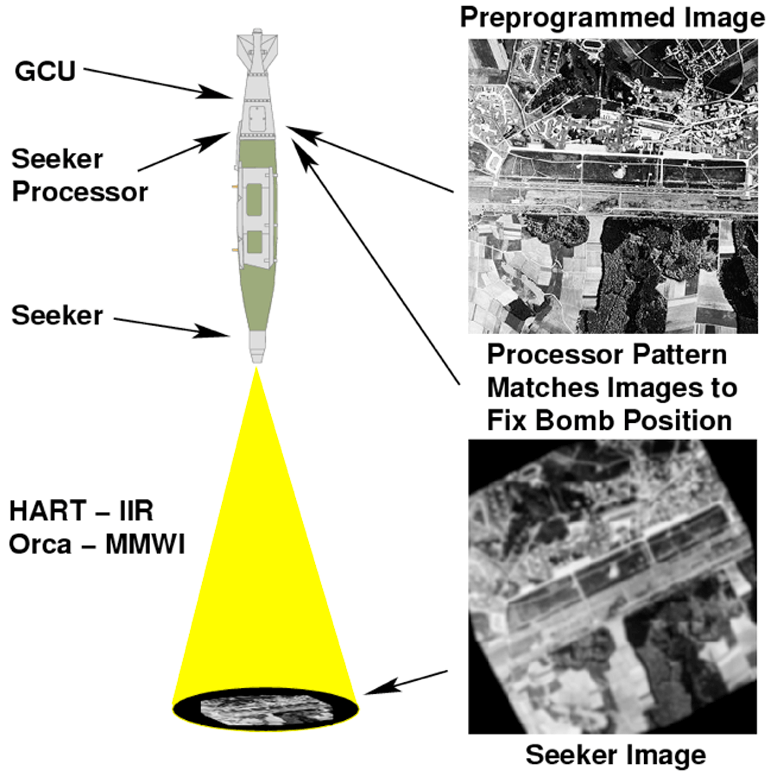
Figure 6. Diagram of the GBU-38 JDAM, fitted with a millimetric wave imaging, or an infra-red imaging homing seeker head (source: Air Power Australia).
PAVEWAY II - GUIDED BOMB UNIT-12 (GBU-12)

Figure 7. Diagram of the GBU-12 PGM (source: Air Power Australia).
The Mk 82 also serves as the warhead for the GBU-12, which uses laser guidance instead of the inertia- and GPS-based guidance of the GBU-38. In order for the GBU-12 to function as intended, the target must be designated with a laser device. This is sometimes known as illuminating or ‘painting’ the target, and can be achieved by a second aircraft or unmanned system circling above the target, or by a ground-based laser target designator carried by personnel or mounted on a vehicle. The bomb must be dropped at the correct height, distance, speed, and bearing from the target in order to function as desired. It uses adjustable tail fins (‘control surfaces’) to steer itself towards the point marked by the laser, but is not fitted with a propulsion unit, so only a partial control of the descent is possible.
Like most laser-guided munitions, the GBU-12 relies on the laser continuously illuminating the target while the bomb is moving towards it. This can be compromised by factors such as rain, dust, smoke, and cloud cover, in which case the bomb would revert to being an iron bomb (i.e. an unguided munition). The fact that the laser-guidance unit can be rendered inoperable in poor weather conditions limits the use of this weapon system. The relative simplicity of the laser guidance system belies its accuracy. The GBU-12 has a CEP of less than 4 m (Lockheed Martin, 2010). Like the JDAM series, there have been a number of iterations of the Paveway munitions.

Figure 8. The GBU-12 PGM (source: IOMAX).
ENHANCED PAVEWAY II – GUIDED BOMB UNIT-49 (GBU-49)
The GBU-49, produced by Raytheon in the 2000s, combines the laser-guidance of the Paveway GBU-12 with the GPS/INS unit of the GBU-38. It first entered service with the British Royal Air Force in 2008 (Raytheon, 2016). The combination of guidance methods allows the bomb to be employed either as a laser-guided munition with GPS/INS redundancy, or as a GPS/INS guided munition. In essence, the GBU-49 allows for the accuracy of a laser-guided weapon, whilst retaining all-weather capability. The GBU-49 has a CEP of less than 10 m using GPS/INS guidance, or less than 4 m using laser guidance (Church, 2016; Lockheed Martin, 2010). The GBU-49 guidance unit cost USD 42,000 in 2015 (Balle, 2015).

Photo 5. GBU-49 attached to MQ-9 Reaper UAV (credit: U.S. Air Force).
BLU-126/B – LOW COLLATERAL DAMAGE BOMB (LCDB)
In response to the need for an aircraft bomb with a more localised effect than the Mk 82, the U.S. military sought a bomb that would use the same body as the Mk 82, but contain a lower explosive fill weight. Inert material was added to the interior of the bomb to ensure that the weight and aerodynamic profile remained the same, thereby ensuring that the bomb would have the same glide characteristics. This was given the designation Bomb Live Unit 126/B (BLU-126/B), also known as the Low Collateral Damage Bomb (LCDB). The BLU 126/B has been specifically designed to produce a reduced fragmentation radius, for situations when airstrikes are to take place close to friendly forces or civilian targets. As the BLU-126/B is the same size and weight as the Mk 82, it can also be fitted with guidance packages developed for the Mk 82, such as the JDAM.
BLU-129/B – VERY LOW COLLATERAL DAMAGE WEAPON (VLCDW)

Photo 6. A photo of the BLU 126/B (photo credit: Lawrence Livermore National Laboratory).
The U.S. Central Command issued a Joint Urgent Operational Need for a very low collateral damage weapon. The result was the BLU-129/B, which has the same dimensions and weight as the Mk 82, but with a carbon-fibre body, rather than a steel one. Rather than fragmenting, the carbon-fibre body disintegrates on detonation. This results in the explosive shockwave being localised, and significantly reduces natural fragmentation, thereby reducing the level of damage outside the effective radius.
Like the BLU-126/B, the BLU-129/B has the size and weight dimensions of the Mk 82, and can also replace the bomb unit for the JDAM and laser-guided variants of the Mk 82.
THE MK 82 AIRCRAFT BOMB CASE STUDIES
More than 20 cases were studied where aircraft bombs were involved. 5 case studies were selected for this report on the basis of the confirmed use of these weapons, the accuracy of documentation, and to geographical distribution of conflicts across the weapon studies. These cover the period from April 2003 to November 2015, and the following countries: Iraq, Afghanistan and Libya.
| Case Study | Date | Location | Deaths | Injuries |
| 1 | 05 Apr, 2003 | Basra, Iraq | 17 | 5 |
| 2 | 04 Aug, 2009 | Amerkheil, Afghanistan | 125 | Unknown |
| 3 | 08 Aug, 2011 | Majer, Libya | 34 | 38 |
| 4 | 30 Aug, 2011 | Bani Walid, Libya | 5 | 1 |
| 5 | 26 Nov, 2015 | Ramadi, Iraq | Unknown | Unknown |
As it is extremely rare to encounter unguided Mk 82 bombs in current conflicts, the case studies in this report examine the use of guided Mk 82 bomb variants. In 2002, for example, U.S. officials noted that 60 per cent of all munitions employed were PGMs, with these weapons having a claimed effectiveness rate of 90 per cent (Schmitt, 2002). It has proven difficult to find reliable information on the use of Mk 82 variants. Almost all the open source, accessible reports were investigations into the civilian harm from these explosive weapons, which may present a bias to examining the efficacy and efficiency of the Mk 82 bomb. Hence, all the cases in this study involve the use of precision guided versions of Mk 82 and incidents of deliberate targeting. Whereas the 227 kg Mk 82 variants are the smallest commonly employed air-delivered bombs in the NATO inventory, the 87-89 kg of high-explosives contained within the Mk 82 bomb is sufficient to cause militarily-significant damage to buildings, vehicles, and people in proximity to the target.
BRIEF DESCRIPTIONS
Case Study No 1
Al-Tuwaisi, Basra, Iraq 5 April 2003, 05:20.
At 05:20 on 5 April 2003, an attempt was made to kill Iraqi Lieutenant General Ali Hassan al-Majid (Chemical Ali) while he was at his home. A 227 kg bomb, of unknown designation, was used to try to minimise collateral damage. The bomb hit the targeted building in a densely-populated neighbourhood of Basra. The two neighbouring houses were also destroyed, killing seventeen civilians and injuring five. There is no evidence to suggest that the target of the attack had ever visited the house.
Case Study No 2
Amerkheil Village, Kunduz Province, Afghanistan, 4 August 2009, 01:45.
At 01:45 on 4 August 2009, two aircraft dropped two GBU-38 JDAM bombs on two hijacked fuel tankers, that had become stuck while trying to cross the Kunduz River in the village of Amerkheil. A crowd of people had surrounded the tankers, and were siphoning fuel when the bombs struck. Casualty reports vary between 125 and 142 killed. Only two people were reported as being injured, but it is likely that the number of people injured was much higher.
Case Study No 3
Majer, Libya 8 August, 2011, 23:00 and 9 August 2011, 01:00.
At approximately 23:00 on 8 August 2011, three GBU-12 bombs hit three houses in adjoining properties, in the village of Majer, Libya. All three houses were destroyed. Other people came to assist with efforts in locating survivors, and were struck by a fourth bomb 10-20 minutes later. An additional 18 people died, and 15 were injured, in the latter attack. Remnants of GBU-12s were found at the site. An additional bomb struck an unoccupied house. In total, 34 people were killed, and 38 injured.
Case Study No 4
Bani Walid, Libya, 30 August 2011, 03:30.
At 03:30 on 30 August 2011, two GBU-12 laser-guided bombs hit a house in Bani Walid, Libya. Five members of a single family were killed, and another family member was injured. The neighbouring house was also destroyed. Evidence suggests that the blast effects killed at least three people.
Case Study No 5
Ramadi, Iraq, 26 November 2015, time not specified.
On 26 November 2015, a Reaper Unmanned Aerial Vehicle (UAV) dropped a GBU-12 laser-guided bomb on a house occupied by Islamic State militants. The house was destroyed. The number of casualties is not known. A video of the attack is included in the sources for this case study.
ANNEX F: CASE STUDIES
CASE STUDY 1
Date/time of attack:
5 April 2003, 05:20.
Location:
Al-Tuwaisi, Basra, Iraq.
Map of the area:
See Figure 9

Figure 9. A map of the targeted area in Al-Tuwaisi, Basra, Iraq (source: Human Rights Watch).
Weapon system:
227 kg guided bomb, designation unknown.
Number of bombs dropped:
One.
Casualties:
17 killed and 5 injured. The casualties all came from two families. Ten of the dead were aged under 18, with the youngest being only 19 months. The eldest to die was a 68 year-old gynaecologist.
Damage:
Three homes destroyed.
Remarks:
This was an attempt to kill Lieutenant General `Ali Hassan al-Majid. Al-Majid, also known as ‘Chemical Ali’, while he was at home. A 227 kg bomb was used to minimise collateral damage. The bomb hit the targeted building in a densely populated neighbourhood of Basra, but the surrounding civilian-owned buildings were also destroyed. Seventeen people were killed in this attack. The homes of the two families were on each side of the building that was attacked. One family home stood on the other side of the targeted house. In total, thirteen members of the extended family were living in a makeshift safe room made of reinforced concrete. The size of the crater suggests that the weapon used in the April 5 attack was a 500-pound (227 kg) laser-guided bomb, the smallest PGM available at the time.
Source(s):
- Human Rights Watch: https://www.hrw.org/reports/2003/usa1203/4.htm#_Toc57442240
CASE STUDY 2
Date/time of attack:
4 September 2009, 01:45.
Location:
Amerkheil Village, Kunduz, Afghanistan.
Map of the area:
See Figure 10

Figure 10. A map of Amerkheil Village, Kunduz, Afghanistan (source: Google Earth).
Weapon system:
GBU-38.
Number of bombs dropped:
Two.
Casualties:
142 killed, unknown injured but only two referred to in reports. It is highly likely that many more people were injured.
Damage:
Two fuel tankers destroyed.
Remarks:
On the afternoon of 4 September 2009, two fuel tankers, belonging to a German Provincial Reconstruction Team (PRT) working in Kunduz, were captured by Taliban fighters. While trying to cross the Kunduz river, the tankers became bogged down. When people were seen moving around the tankers, the commander leading the pursuit requested an air strike. An informant asserted that the people at the site were all fighters, where in fact, hundreds of ordinary villagers had swarmed to the stranded tankers to siphon fuel.

Photo 7. One of the stranded tankers near Amerkheil Village, Kunduz (photo credit: NRZ Info).
Source(s):
- Amnesty International: https://www.amnesty.org/en/documents/asa11/015/2009/en/
- Action on Armed Violence (AoAV): https://aoav.org.uk/wp-content/uploads/2015/03/AOAV-Air-Power-in-Afghanistan.pdf
- Spiegel: http://www.spiegel.de/international/germany/deadly-bombing-in-kunduz-german-army-withheld-information-from-us-pilots-a-675229.html
CASE STUDY 3
Date/time of attack:
8 August 2011, 23:00, and 9 August 2011, 01:00.
Location:
Majer, Libya (6 km south of Zliten).
Map of the area:
See Figure 11
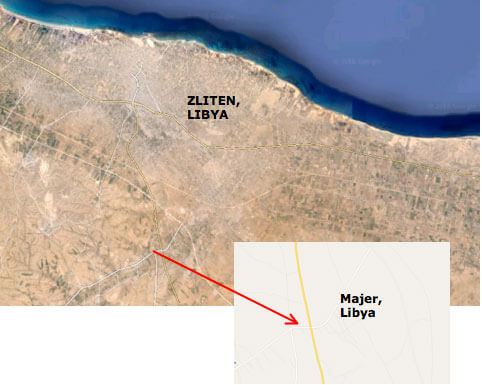
Figure 11. A map of Majer, Libya (6 km south of Zliten) (source: Google Maps).
Weapon system:
GBU-12.
Number of bombs dropped:
Five.
Casualties:
34 killed and 38 injured.
Damage:
Four homes destroyed.
Remarks:
One bomb fell initially at 23:00, which destroyed a two-storey house, killing 14 and wounding 17. Moments later, two more bombs were dropped, destroying two more houses. A fourth bomb was dropped 10-20 minutes later. This bomb killed 18, and injured 15, who were in the process of trying to find survivors from the first attack. A final bomb struck another building which was unoccupied at the time.
HRW found remnants of GBU-12 bombs at the scene. The houses were in two family compounds that were sheltering other families, who had fled the fighting elsewhere in Libya.
Photos of the damage:

Photo 8. A destroyed house from the attack in Majer, Libya (image credit: Deutsche Welle).

Photo 9. The Gafez family compound, far left, and al-Jarud family compounds, centre and bottom right, on 6 August 2011, two days before NATO air strikes hit the compounds. The compound in the centre was uninhabited (image credit: UNITAR/UNOSAT).

Photo 10. The Gafez family compound, far left, and al-Jarud family compounds on 9 August 2011, the day after NATO air strikes on the properties killed 34 (image credit: UNITAR/UNOSAT).
Source(s):
- Human Rights Watch: https://www.hrw.org/report/2012/05/13/unacknowledged-deaths/civilian-casualties-natos-air-campaign-libya
- Foreign Policy Journal: http://www.foreignpolicyjournal.com/2011/08/13/natos-massacre-at-majer-libya/
- CNN: http://www.cnn.com/2011/WORLD/africa/08/09/libya.zlitan/index.html
- The Washington Post: https://www.washingtonpost.com/opinions/natos-lost-lessons-from-libya/2012/06/11/gJQAhkAoVV_story.html
- DW: http://www.dw.com/en/more-questions-than-answers-about-natos-libya-role/a-15548186
CASE STUDY 4
Date/time of attack:
30 August 2011, 03:30.
Location:
Bani Walid.
Map of the area:
See Figure 12

Figure 12 A map of Bani Walid (source: Google Maps).

Figure 13. Satellite imaging of two houses in the Jfara family compound in Bani Walid on 22 May 2011, before the airstrike (source: Human Rights Watch).

Figure 14. Satellite imaging of two houses in the Jfara family compound in Bani Walid on 4 September 2011, after the airstrike (source: Human Rights Watch).
Weapon system:
GBU-12.
Number of bombs dropped:
Two.
Casualties:
Five killed, and one injured. All casualties were members of the same family. Two men, two women, and a 9 year-old girl were killed. A 15-year-old girl was injured.
Damage:
Two homes destroyed.
Remarks:
Three bodies were thrown approximately 25 m by the explosion. The other two bodies were inside the house, covered by rubble. The injured girl allegedly suffers from brain damage. HRW recovered remnants of GBU-12 at the scene.
Source(s):
- Human Rights Watch: https://www.hrw.org/report/2012/05/13/unacknowledged-deaths/civilian-casualties-natos-air-campaign-libya
- Human Rights Watch: https://www.hrw.org/sites/default/files/reports/libya0512_brochure_low.pdf
- NATO: http://natowatch.org/sites/default/files/NATO_Watch_Briefing_Paper_No.21_-_UN_Human_Rights_Council_report_on_Libya.pdf
CASE STUDY 5
Date/time of attack:
26 November 2015, time not specified.
Location:
Ramadi, Iraq.
Map of the area:
See Figure 15

Figure 15. A map of Ramadi, Iraq (source: Google Maps).
Weapon system:
GBU-12.
Number of bombs dropped:
One.
Casualties:
Numbers were not given, only the statement that this was a ‘terrorist-held’ building.
Damage:
One house destroyed. It was not possible to determine other damage from the video evidence.
Remarks:
This case is an example of use of a GBU-12 launched from a Reaper UAV. Prior to this strike, the Reaper’s crew provided surveillance assistance to a successful coalition strike that eliminated an Islamic State group sniper team in the same area.

Photo 11. A photo of RAF Reaper UAV (photo credit: RAF).
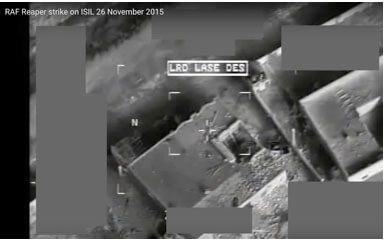
Photo 12. An image of the targeted house on 26 November 2015, before the strike (photo credit: The Daily Mail).

Photo 13. An image of the targeted house on 26 November 2015, after the strike (photo credit: The Daily Mail).
Source(s):
- Lincolnshire Echo: http://www.lincolnshireecho.co.uk/MOD-log-reveals-drones-piloted-RAF-Waddington/story-28298236-detail/story.html#ixzz4ARH75B7B
- UK Ministry of Defence: https://www.gov.uk/government/publications/british-forces-air-strikes-in-iraq-monthly-list/november-2015
Videos:
- YouTube: https://www.youtube.com/watch?v=VMN8WqIrLaY
- YouTube: https://youtu.be/VMN8WqIrLaY
